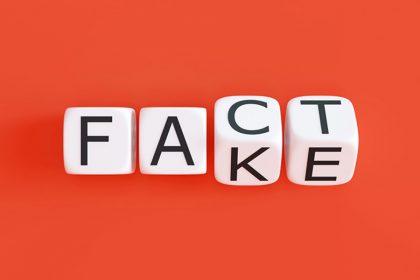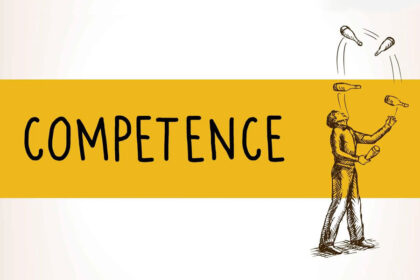Hi readers! Do you know that from computer chips and batteries to solar panels, all rely on inorganic crystals (a solid material in which the component atoms are arranged in a definite pattern and whose surface regularity reflects its internal symmetry for example diamond (crystal carbon), salt (sodium chloride crystals), quartz (silicon dioxide crystals), and snowflakes (water ice crystals). Many gems are also crystals, including emerald, citrine, ruby, and sapphire.
If the crystals are not stable, they can decompose. Since development of advanced and new technologies need stable crystals, which require cumbersome experimentation, it is imperative therefore, that the crystals used in computer chips batteries and solar panels.
Google’s GNoME AI, developed by the team behind AlphaFold, is transforming material science by rapidly predicting the structure of new materials. This breakthrough AI tool significantly impacts fields like solar energy, battery development, and computer chip manufacturing, offering efficient and sustainable solutions.
GNoME’s ability to analyze millions of materials quickly exhibited a significantly monumental advancement in material discovery and technology.
Google Deep Mind: the brains behind the AI system Alpha fold which predicts protein structures has now unveiled another remarkable AI tool GNoME which is a Game Changer in the field of AI capable of discovering hundreds of thousands even millions of new materials at an unprecedented pace which will have a significant impact on Material Science as it is specific for science of discovering new materials.
If materials that are better, cheaper or more eco-friendly could be found, it could help tackling big issues like energy storage.
Normally, finding new materials is a long and hard process as scientists has spent years in mixing and testing different elements trying to get the right combination possessing the properties they want. But even when they find something that works, they might not usually understand why or how to make it better. This is where GNoME is a game changer because it looks at all the information available already for materials and uses them to predict new ones hence, it can quickly tell us if a material will be stable for the energy required to create it and its structure?
GNoME can do this analysis for millions of materials in just a few hours which otherwise would taken years.
GNoME and Alpha fold from Google Deep Mind both use deep learning for different purposes. Alpha fold works on predicting protein shapes crucial for life made of amino acids that fold in complex ways. GNoME on the other hand predicts structures of materials. It focuses on how atoms: the building blocks of materials come together to form various crystal shapes. What has GNoME achieved so far? has been published in Nature of November 2023 with some amazing results that are placed below.
On November 29th, Nature published an Article titled:
“Scaling deep learning for materials discovery.”
(you can read the article on the link (https://www.nature.com/articles/s41586-023-06735-9)
in which they reported the use of augmented machine learning for materials exploration. The large-scale active learning yielded the first models that accurately predicted stability and therefore, can guide materials discovery.
At the outset, they established methods for generating diverse candidate structures including new symmetry-aware partial substitutions (SAPS) to increase diversity of structures generations and random structure search. . Secondly, they used state-of-the art graph neural networks (GNN: an optimizable transformation on all attributes of the graph ) that improve modelling of material properties that are given in structure or its composition. Later, these Graph Networks for Materials Exploration (GNoME) were trained on available data and used it to filter candidate structures.
GNoME (an Artificial Intelligence tool) finds 2.2 million new crystals
(equivalent to nearly 800 years’ worth of knowledge OMG. Imagine the upcoming technology explosion? it is beyond comprehension),
including 380,000 stable materials (that normally possessed the capacity to resist changes in their chemical composition, despite exposure to air, water, and heat as encountered in fire emergencies) and could power future technologies as these materials are promising candidates for experimental synthesis.
“Among these candidates, are material that have the potential to develop future transformative technologies ranging from superconductors, powering supercomputers and next generation batteries to boost the efficiency of electric vehicles“
The scientist involved in the study claimed that GNoME has dramatically increased the speed and efficiency of discovery by predicting the stability of new materials. They said that “with GNoME, we’ve multiplied the number of technologically viable materials known to humanity.
GNoME exhibited the potential of using the power of Artificial Intelligence (AI) to discover and develop new materials. External researchers in labs around the world have independently created 736 of these new structures experimentally in concurrent work.
In partnership with Google DeepMind, a team of researchers at the Lawrence Berkeley National Laboratory has also published a second paper in Nature that shows how our AI predictions can be leveraged for autonomous material synthesis.
The predictions of GNoME are available to the research community. The authors further claims that “we will be contributing 380,000 materials that we predict to be stable to the Materials Project, which is now processing the compounds and adding them into its online database. We hope these resources will drive forward research into inorganic crystals and unlock the promise of machine learning tools as guides for experimentation.
Dear readers! did you see at what pace the technology is advancing? not in years but in weeks and some time days. It will further be accelerated through the use of power exhibited by Artificial Intelligence tools like GNoME. Keeping pace with this tsunami is hard and learning these technologies is even harder. Nevertheless knowing them is better than staying aloof. I don’t want to see you aloof and detached therefore, you must keep yourself awake so that you are not caught unaware. The take home message is “learn artificial intelligence, comprehend it power, and
use it if you can?
See you next week.
Take care,
Bye




